Click here of a comprensive history of Dogtown.
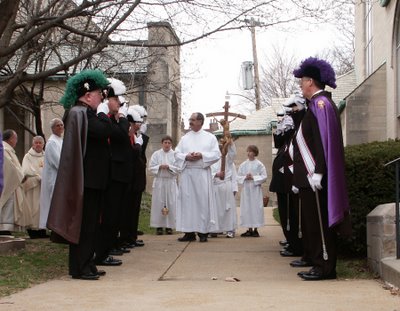
Knights of Columbus guard the procession into the church. The mass was standing room only, featured Irish hymns, and prayed for the re-Christianization of Ireland and reunion with the North.
Once the preserver of classical antiquity, source of missions, and the most Catholic nation in Europe, Ireland has recently become highly secularized, trading money for the Faith. One of the last three Jesuit churches in that country is being sold for 4 million euros.

The church is in the late Gothic style. Originally it was to have a massive tower over the transept, but due to lack of funds, instead has a Gothic flèche. This spire is illuminated at night and can be seen for miles.

The nave of the church, looking towards the sanctuary.

The sanctuary. Behind the altar is a tapestry tryptich, with Christ the King in the center, and Saints on the sides.
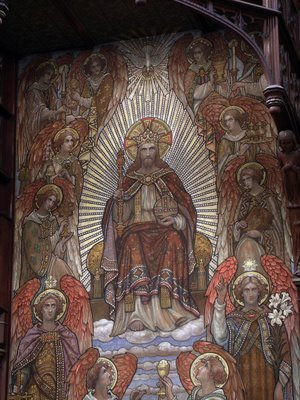
Detail of the tapestry behind the altar. It depicts Christ as King, the sovereign who rules over all worldly powers.
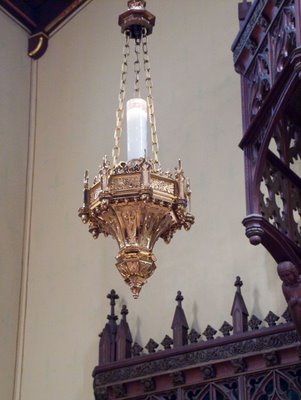
The sanctuary lamp is suspended over the altar by a chain.
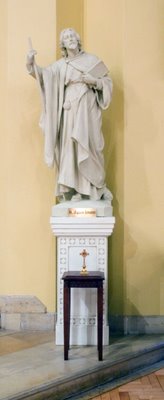
A statue of Saint James the Greater, an Apostle of Christ, who with John his brother was one of the "sons of thunder", known for great evangelical zeal and fiery temper. He is known as "Greater" because he was taller than the other Apostle James. He was the first martyr of the persecution of Herod Agrippa I in A.D. 44. James' accuser's regret over this death led to the conversion of Saint Clement of Alexandria.

Relic of the Saint. The lettering says "S. Jacobus Ap.". The major site of his relics is in Spain, and is a famous and ancient pilgrimage destination.
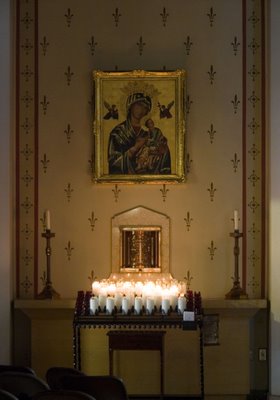
Icon of the Blessed Virgin Mary, under the title of Our Mother of Perpetual Help. The original version of this Byzantine icon came from Crete. Although this is an Eastern painting, it shows the influence of Franciscans, who introduced the portrayal of the Virgin Mary as a woman of sorrows. The color of her robes is the royal purple, reserved exclusively to the Empress of the Eastern Roman Empire, and which is where we get the color of the penitential seasons of Lent and Advent.

A view of the nave to the side.
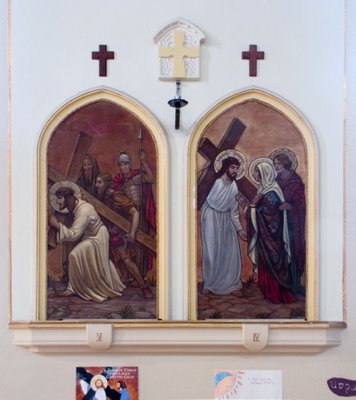
Tapestry Stations of the Cross. Below these are children's drawings of the Stations.
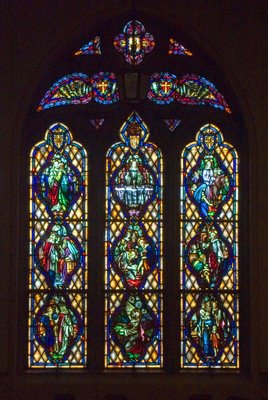
A stained glass window.

The Baptistry, located in the back of the church near the main entrance. Traditionally, baptistries were located near the entrance (as a sign of entering the Church) or in a separate building, for privacy and solemnity.

Side-door into the church.

Cloister attached to the rectory.

The rectory.

Parade-goers wait in front of the parish school. Large numbers of shamrocks decorate the school windows.

The Dogtown neighborhood is marked by various styles of architecture. To the left are older brick shotgun houses, some with decorative facades; to the right are more recent split-levels.
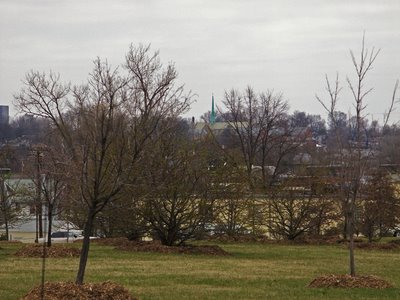
A view of the church from about a mile from the southeast. The church is located near the summit of what was once called Dry Hill, one of the highest points in the city. Dogtown sits on the northern side of the valley of the River des Peres, and once was the site of numerous clay and coal mines, and was the center of a brickmaking industry.
Address:
401 Wade Ave.
St Louis, MO 63139
Parish web site: http://www.stjamesthegreater.org


Hi Mark! I was perusing through your site and I love the work you are doing! I found the photos of our church, St. James the Greater, and I have an unusual question to ask. In the sanctuary photo there is a greenish blue light that looks almost figure-like in front of the podium. Can you ascertain what that is?
ReplyDeleteI looked at the original image, and my camera’s shutter was open for 2.8 seconds with that image. Anyone moving during that time could appear rather blurry. I looked at my previous images taken from the same position, and it appears that someone wearing green was sitting there and must have moved during the last photo. I ought to note that at the Mass earlier, many of the people attending were wearing green.
Delete